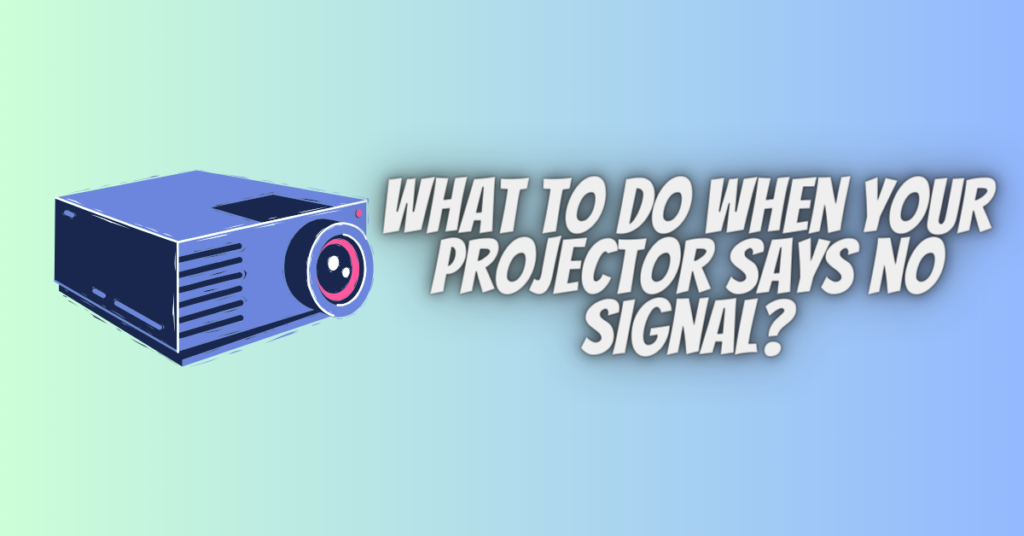Encountering a “No Signal” message on your projector can be frustrating, especially when you’re eager to start your presentation or movie night. Fortunately, this problem is common and often easily fixable. In this article, we will explore the possible causes behind a “No Signal” error and provide practical steps to troubleshoot and resolve the issue effectively.
1. Check Cable Connections:
The most common reason for a “No Signal” message is loose or faulty cable connections. Ensure all cables, including HDMI, VGA, or DisplayPort, are securely plugged into both the projector and the source device (such as a computer, laptop, or DVD player). If possible, try using different cables to rule out a cable malfunction.
2. Select the Correct Input Source:
Sometimes, the projector might be set to the wrong input source. Use the remote control or the buttons on the projector to navigate through the input sources (HDMI, VGA, etc.) and select the appropriate one that matches the connected device.
3. Restart the Projector and Source Device:
Power cycle both the projector and the source device. Turn off both devices, wait for a few seconds, and then turn them back on. This can often resolve temporary glitches and establish a stable connection.
4. Check the Source Device Settings:
Ensure that the source device (computer, laptop, etc.) is configured to duplicate or extend the display to the projector. On Windows, you can press Win + P to bring up the display options menu and select “Duplicate” or “Extend.” On macOS, go to “System Preferences” > “Displays” and choose the appropriate display arrangement.
5. Inspect the Projector Lamp and Filters:
An aging or faulty projector lamp might cause display issues. Check if the projector lamp needs replacement based on the manufacturer’s recommended hours of use. Additionally, clean the projector’s air filters to prevent overheating, which can affect the display quality.
6. Update Firmware and Drivers:
Outdated firmware or graphics drivers can sometimes lead to connectivity problems. Check the manufacturer’s website for firmware updates for your projector and update the graphics drivers on your source device to the latest version.
7. Try a Different Source Device:
If possible, connect a different source device to the projector to see if the issue persists. This can help determine whether the problem lies with the projector or the original source device.
8. Consult the User Manual or Manufacturer’s Support:
If none of the above solutions work, consult the user manual of your projector for specific troubleshooting steps. If the problem persists, it’s advisable to contact the manufacturer’s customer support or seek assistance from a professional technician.
Conclusion
Experiencing a “No Signal” message on your projector can be inconvenient, but most of the time, it’s a minor issue that can be resolved with basic troubleshooting steps. By checking cable connections, selecting the correct input source, restarting devices, adjusting settings, inspecting the lamp and filters, updating firmware and drivers, trying different devices, and consulting the user manual or manufacturer’s support, you can diagnose and fix the problem effectively. With patience and systematic troubleshooting, you can get your projector back up and running, ensuring uninterrupted presentations, movie nights, or gaming sessions.


